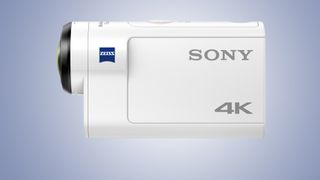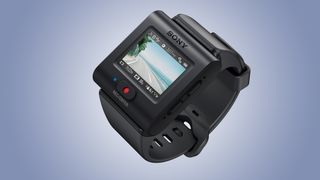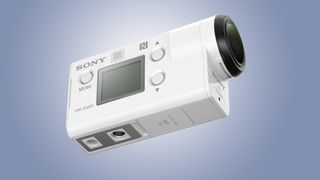TechRadar Verdict
This tiny action cam’s nicely image stabilized 4K 30fps footage impresses, but an unreliable live view remote makes this variant of the cheaper FDR-X3000 of dubious value.
Pros
- +
Waterproof housing included
- +
B.O.SS image stabilization tech impresses
- +
Remote monitoring
- +
Useful 3x digital zoom for close-up shots
- +
Tripod thread
- +
Plenty of accessories
Cons
- -
High price
- -
Live View Remote drop-outs common
- -
3x zoom lacks autofocus
- -
Soft still images
- -
Short battery life
Why you can trust TechRadar
All action cameras are now promising 4K at 30fps, from the GoPro Hero5 Black to the YI 4K Action Camera, but Sony’s effort is about a lot more than just resolution and frame rate. The diminutive FDR-X3000R's biggest claim is Balanced Optical SteadyShot (B.O.SS) image stabilization, which works across all resolutions and recording modes.
Also claiming 8.2-megapixel stills that can be used to create 4K time-lapse videos, the FDR-X3000R uses a new Zeiss Tessar wide-angle lens and the same BIONZ X processor found in Sony's A7 cameras, but it's actually two design features that really help the FDR-X3000R stand out.
First is an included underwater housing – a rarity in the action camera market – and second is its wearable, mountable live view remote, a smartwatch-sized contraption that allows the FDR-X3000R to be operated from afar, and its images previewed in real time.
However, all this comes at a cost, with the FDR-X3000R coming in at $520 / £500 / AUS$650; the same camera without the live view remote, the FDR-X3000, is available for around $400 / £410 / AU$550. Can it really justify that high price?

Features
- 4K video capture at 30fps
- Wearable live view remote
- Balanced Optical SteadyShot (B.O.SS) image stabilization
The only real difference between the FDR-X3000R and FDR-X3000 packages is that the former includes a live view remote – the RM-LVR3 – which allows remote control of the cam, and supplies a live preview. It connects to its mothership via Bluetooth.
The FDR-X3000R also creates a Wi-Fi Direct network for a phone to join, which brings into play Sony’s similarly remote operation/preview-capable app, PlayMemories Mobile. The app also indulges in live streaming, and links to some editing software.
The FDR-X3000R shoots in two video formats, XAVC S and MP4. The former can reach 4K at 30fps at 60mbps and 100mbps, while the latter maxes out at Full HD at 30fps in HQ mode.
Design and accessories
- Splash-proof design
- No lens cap in box
- Huge range of accessories
A surprisingly small, sleek product that measures just 29 x 47 x 83mm, the splash-proof FDR-X3000R weighs a mere 114g with the battery inserted. On the top is the power button and the record button, on the side are the 22 x 12mm screen and controls, and on the back are an HDMI output, micro USB slot and a microphone jack.
Under the lens on the front are two microphones, while on the undercarriage is a standard tripod thread and a microSD slot. Sony recommends a SDXC/SDHC Class 10 card for XAVC S recording, and a SDXC/SDHC U3-class for 4K 100Mbps recording. Indeed, you can’t even make 4K recordings or take photos without one inside.

The Live View remote (RM-LVR3) in the box (and not available separately – so the major selling point) automatically senses, and connects to, the FDR-X3000R when it’s switched on, though during our tests it often lost connection even when close by, taking a good 30 seconds to re-link and re-awaken a live view. We couldn’t find any explanation or fix for its continual unreliability; the phone app is so much better.

That’s a shame because the camera itself promises genuine usability, and comes with a bunch of accessories, from a wristband, a mount adapter and a cradle for recharging (all in the box), and add-ons including a novel finger grip (AKA-FGP1) and handlebar mount (VCT-HM2). That finger grip impresses, enabling stable one-fingered monitoring and operation of the FDR-X3000R.
Installed on the top, the live view remote tilts, though there is a downside to this mini-rig setup; every button press on the remote introduces a noticeable judder in the video. So attaching the remote to the cam thus misses the point of having them separate in the first place, though the finger grip itself does allow smoother pans. Sadly, the finger grip’s transparent plastic housing carelessly covers the tripod mount, which is annoying if you want to quickly swap to a stationary shot.
However, also in the box with the finger grip is a small rubber lens cap, which is massively appreciated (we always wonder why action cams never include one as standard). You can go accessory-mad here – Sony even makes a motor vibration absorber (AKA-MVA) for using the FDR-X3000R while on a motorbike (or anything with a vibrating engine).
Jamie is a freelance tech, travel and space journalist based in the UK. He’s been writing regularly for Techradar since it was launched in 2008 and also writes regularly for Forbes, The Telegraph, the South China Morning Post, Sky & Telescope and the Sky At Night magazine as well as other Future titles T3, Digital Camera World, All About Space and Space.com. He also edits two of his own websites, TravGear.com and WhenIsTheNextEclipse.com that reflect his obsession with travel gear and solar eclipse travel. He is the author of A Stargazing Program For Beginners (Springer, 2015),

5 absolutely unmissable reviews from the last week, whether it’s Samsung’s AI-infused Galaxy S25 Ultra or these fantastic-sounding, compact wireless speakers

Automate anything using this clever, original, and inventive app

An Nvidia GeForce RTX 5090 with 96GB of GDDR7 memory? No, this is almost certainly the RTX 6000 Blackwell
Most Popular


